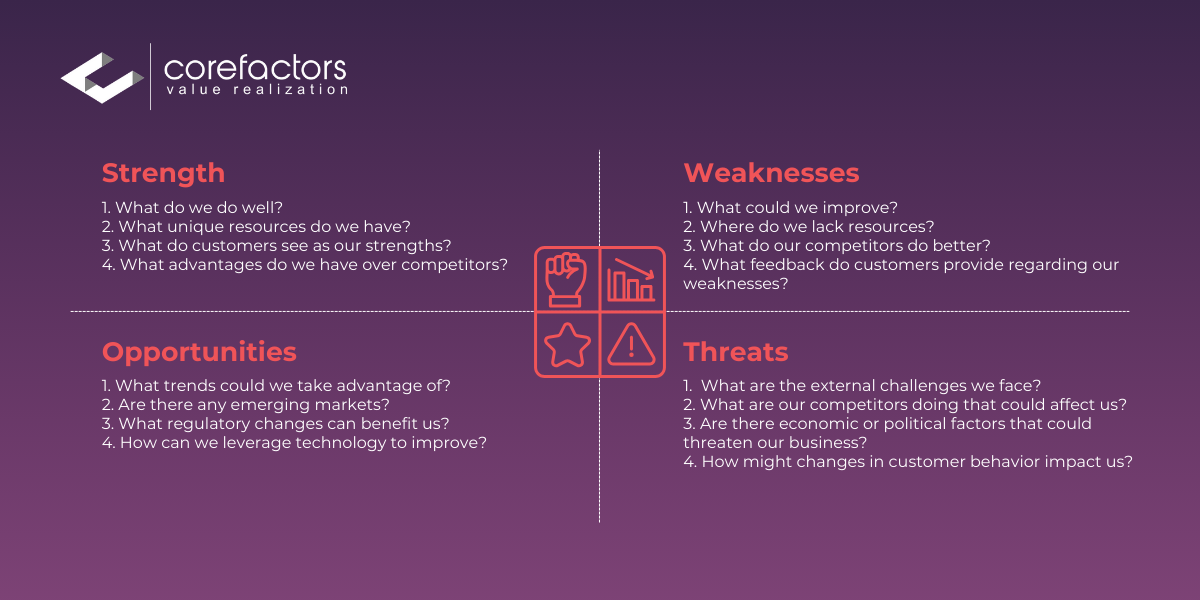As businesses race to keep up with rapid digital evolution, the real challenge isn’t just adapting, but thriving amid constant change.
Central to this ambition are two essential disciplines: business analysis and process management. Although frequently referenced in the business world, these concepts are often misunderstood or underestimated.
If you’re in B2B, you’ve likely encountered these terms. But are you truly leveraging them for strategic growth?
In this blog, we’ll break down business analysis and process management, explore their powerful synergy, and show how mastering them can elevate your business to new heights.
Business Analysis: The Strategic Brain of Your Organization
Business analysis is the art of uncovering business needs, defining clear requirements, and delivering strategic, data-driven solutions.
But it’s far more than just number-crunching.
Business analysts (BAs) dive deep into every facet of the organization, uncovering key insights that shape critical decision-making.
From optimizing workflows and enhancing customer experiences to uncovering new revenue opportunities, a BA’s role is to ensure that every recommendation directly aligns with the company's broader strategic objectives.
Business analysis answers fundamental questions such as:
- What challenges are preventing growth?
- How can we streamline processes to increase efficiency?
- What new opportunities exist in the current market landscape?
- How can we better align our products or services with customer needs?
- What data-driven insights can we leverage to improve decision-making?
By asking the right questions and diving into data, organizations can solve immediate problems and position themselves for long-term success.
The Technical Foundations of Business Analysis
Business analysis relies heavily on quantitative and qualitative techniques to understand the current state of an organization and map out potential improvements.
Here are some key methodologies and tools that business analysts commonly use:
- SWOT Analysis (Strengths, Weaknesses, Opportunities, Threats): This classic tool helps analysts understand internal and external factors that can influence business strategy.
Take a look at how answering these key questions can reveal your Strengths, pinpoint your Weaknesses, uncover new Opportunities, and help you identify potential Threats to your business.

- Root Cause Analysis: Helps identify the underlying reasons for a problem, so solutions target the issue's origin, not just its symptoms.
- Data Mining and Predictive Analytics: BAs frequently employ data science techniques to extract useful patterns from massive data sets. Predictive analytics can help forecast customer behavior or market trends, empowering businesses to take pre-emptive actions.
- Business Process Model and Notation (BPMN): A visual modeling language used to represent business processes in a workflow. It enables BAs to document, analyze, and communicate complex business processes in a way understandable to both technical and non-technical stakeholders.
- Unified Modeling Language (UML): Commonly used in software development, UML diagrams help model the relationships between various components in a system or business environment. BAs leverage UML to visualize both business processes and data flows.
These tools serve as a technical foundation that allows business analysts to dig deep into how a business operates and identify areas for improvement. It translates data and insights into a clear action plan that aligns with the organization's strategic objectives.
Process Management: The Engine of Operational Excellence
While business analysis identifies what needs to be done, process management answers how it should be done.
Business Process Management (BPM) is a structured approach to designing, executing, monitoring, and optimizing business processes. It's about ensuring that every workflow, from customer onboarding to supply chain logistics, operates efficiently and adds value at all stages.
Key elements of effective BPM include the following processes:
- Designing: Defining the ideal workflow that meets business goals.
- Executing: Implementing the designed workflows with precision and consistency.
- Monitoring: Continuously tracking performance to identify bottlenecks or inefficiencies.
- Optimizing: Regularly refining workflows to ensure ongoing efficiency and alignment with strategic objectives.
With BPM, businesses can:
- Streamline operations and reduce waste
- Ensure consistent, high-quality outcomes
- Adapt quickly to market or operational changes
- Improve collaboration across departments
The Technical Components of Business Process Management
BPM is both an art and a science, requiring a deep understanding of technology, people, and processes.
Some of the core technical tools and concepts in BPM include:
- Workflow Automation Tools: Software platforms like Corefactors, Bizagi, Kissflow, Appian, or Pega are used to automate repetitive tasks, enforce process rules, and ensure consistency across workflows. Automation reduces human error and improves efficiency.
- Process Modeling and Simulation: Before implementing any changes, process managers use simulation tools to model various scenarios and analyze the potential impact of those changes. This prevents costly mistakes.
- Key Performance Indicators (KPIs): In BPM, KPIs are used to monitor process performance in real-time.
For example, in a B2B setting, KPIs might include cycle time, cost per transaction, error rates, and customer satisfaction scores.
- Six Sigma and Lean: These methodologies are used to minimize waste, reduce process variations, and improve overall quality.
Six Sigma, for example, employs a data-driven approach using statistical methods to eliminate defects and inefficiencies.
Driving Innovation Through Incremental Change
While the overarching goal of BPM is to streamline workflows, the nuances of process management lie in the approach.
Here’s how effective BPM adds value to an organization:
- Continuous Improvement (CI): BPM is not a one-off project. It's a repetitive cycle of refinement and improvement. This involves constantly monitoring performance, gathering feedback, and making small, incremental changes that add up to significant gains over time.
- Cross-Departmental Alignment: Processes don’t exist in isolation. Effective process management ensures that workflows across different departments are aligned with the company’s larger strategy. For example, a smooth handoff between the sales and customer service teams can dramatically improve client satisfaction and reduce churn.
- Scalability: In a rapidly growing business, processes that work today may not be sufficient tomorrow. BPM ensures that your workflows are scalable, allowing you to maintain efficiency and quality even as your company grows.
BPM Software and Integration
BPM is the central nervous system of any business’s operations.
Here’s how advanced BPM platforms transform organizational efficiency.
- Real-Time Monitoring and Dashboards: BPM tools provide dashboards that give stakeholders real-time insights into process performance. For example, in a B2B environment, a logistics company can track delivery times, shipping costs, and customer feedback in real time, allowing them to make adjustments immediately when issues arise.
- Integration with Other Systems: Modern BPM platforms are not standalone. They integrate seamlessly with other enterprise systems such as ERP (Enterprise Resource Planning), CRM (Customer Relationship Management), and HRIS (Human Resource Information System). This ensures that data flows smoothly between systems, reducing redundancies and errors.
The Synergy Between Business Analysis and Process Management
Forward-thinking organizations recognize that business analysis and process management are deeply intertwined. These two function as a unified system that drives continuous improvement.
Rather than existing in silos, business analysis, and process management form a powerful, symbiotic relationship that transforms raw data into actionable processes and scalable operations.
Here’s a closer look at how they work together.
- Data-Informed Process Optimization
Business analysts (BAs) perform in-depth analysis of business data, whether from customer interactions, operational performance, or market trends, to identify inefficiencies and opportunities. Meanwhile, process managers take these insights and implement targeted changes using advanced Business Process Management (BPM) tools such as robotic process automation (RPA), process mining software, and enterprise workflow systems. This collaboration ensures that process improvements are strategic and highly adaptable to real-world operational needs.
Example: A BA might uncover a bottleneck in the supply chain through data analysis, while the process manager leverages RPA to automate and optimize that specific workflow, reducing lead time and improving throughput.
2. Agile Process Iteration and Scalability
The fusion of business analysis and process management fosters rapid, data-driven iteration. With predictive analytics and real-time insights, business analysts can identify the need for immediate changes, while process managers deploy agile methodologies to test, adjust, and scale new workflows seamlessly. BPM platforms with integrated process modeling and simulation capabilities enable teams to trial changes in a low-risk environment, ensuring that iterations are optimized before full-scale deployment.
Example: In a dynamic market, a BA may predict a shift in customer demand. With BPM’s capacity for rapid iteration, process managers can swiftly adjust operational processes like production schedules or customer service workflows, adapting in near real-time to the changing market landscape.
3. Risk Mitigation Through Predictive Insights
Business analysts use advanced data analytics tools like machine learning algorithms, predictive modeling, and risk forecasting, to predict potential challenges or disruptions in operations. Process managers can then design robust workflows to mitigate these risks, incorporating preventive mechanisms like failover systems, automated alerts, and contingency plans. By embedding risk mitigation directly into the process design, organizations minimize disruptions and reduce the likelihood of system-wide failures.
Example: An analyst identifies an increased risk of supply chain delays through predictive analytics, prompting the process manager to redesign the procurement workflow. By implementing automated alerts and multiple vendor relationships, the company ensures supply chain continuity even in the face of disruption.
4. Improved Strategic Alignment
Business analysis ensures that all process improvements are strategically aligned with company goals, while BPM guarantees these strategic directives are consistently applied across the organization. This synergy ensures processes not only run efficiently but also contribute to long-term business objectives.
5. Faster Time to Market
Business analysts assess bottlenecks in the product development lifecycle by analyzing performance data and stakeholder feedback. They identify delays and inefficiencies, while process managers optimize workflows to streamline each phase, from ideation to launch. This enables businesses to bring new products or services to market more quickly and efficiently.
Example: The analyst uncovers delays in the product testing phase by analyzing cycle time data. The process manager implements parallel testing workflows and automated testing tools. As a result, the company reduces time-to-market by (let’s assume) 20%, allowing it to launch ahead of competitors.
Fostering a Culture of Operational Excellence
Ultimately, the combination of business analysis and process management fosters a culture of operational excellence.
It encourages teams to not only focus on their day-to-day tasks but also to think strategically about how their work fits into the bigger picture. When teams are aligned with the company’s strategic objectives, efficiency, and innovation go hand in hand.
Is Your Business Ready?
Now is the time to rethink your approach. Business analysis and process management won't just be a key component, but they will be the very foundation of successful businesses in the future.
At Corefactors, we’re focused not just on optimizing your current operations, but on helping you build an adaptable, future-ready business.
The question is: are you ready to challenge your existing processes to secure long-term success? Let’s transform your untapped potential into measurable, impactful results.

Frequently Asked Questions (FAQs)
1. How do business analysis and process management differ?
Business analysis identifies what needs to be done, focusing on strategic insights and decision-making, while process management defines how things should be done by optimizing workflows and ensuring operational efficiency.
2. How do business analysis and process management work together in real-time iteration?
Business analysts use real-time insights to identify areas for improvement, while process managers employ agile methodologies to test and scale changes, allowing for rapid adaptation to market shifts.
3. How does business analysis support decision-making?
Business analysis uncovers data-driven insights that guide critical decision-making. It identifies challenges, uncovers opportunities, and aligns strategies with customer and market needs.
4. How do business analysis and process management drive innovation?
Business analysis provides the insights needed to identify areas for improvement, while process management ensures that workflows are optimized. Together, they create a culture of innovation and operational excellence.
5. How does business analysis help optimize business processes?
Business analysts analyze data to uncover inefficiencies, while process managers implement changes using tools like RPA, ensuring streamlined, data-driven workflows.








